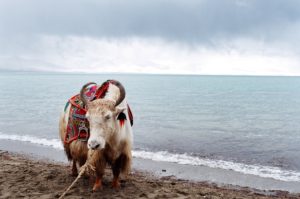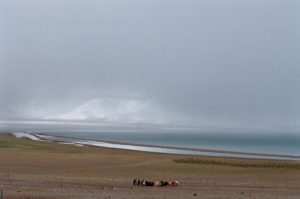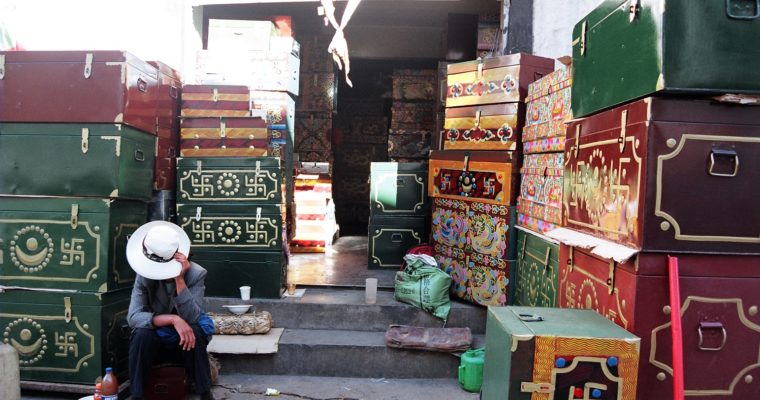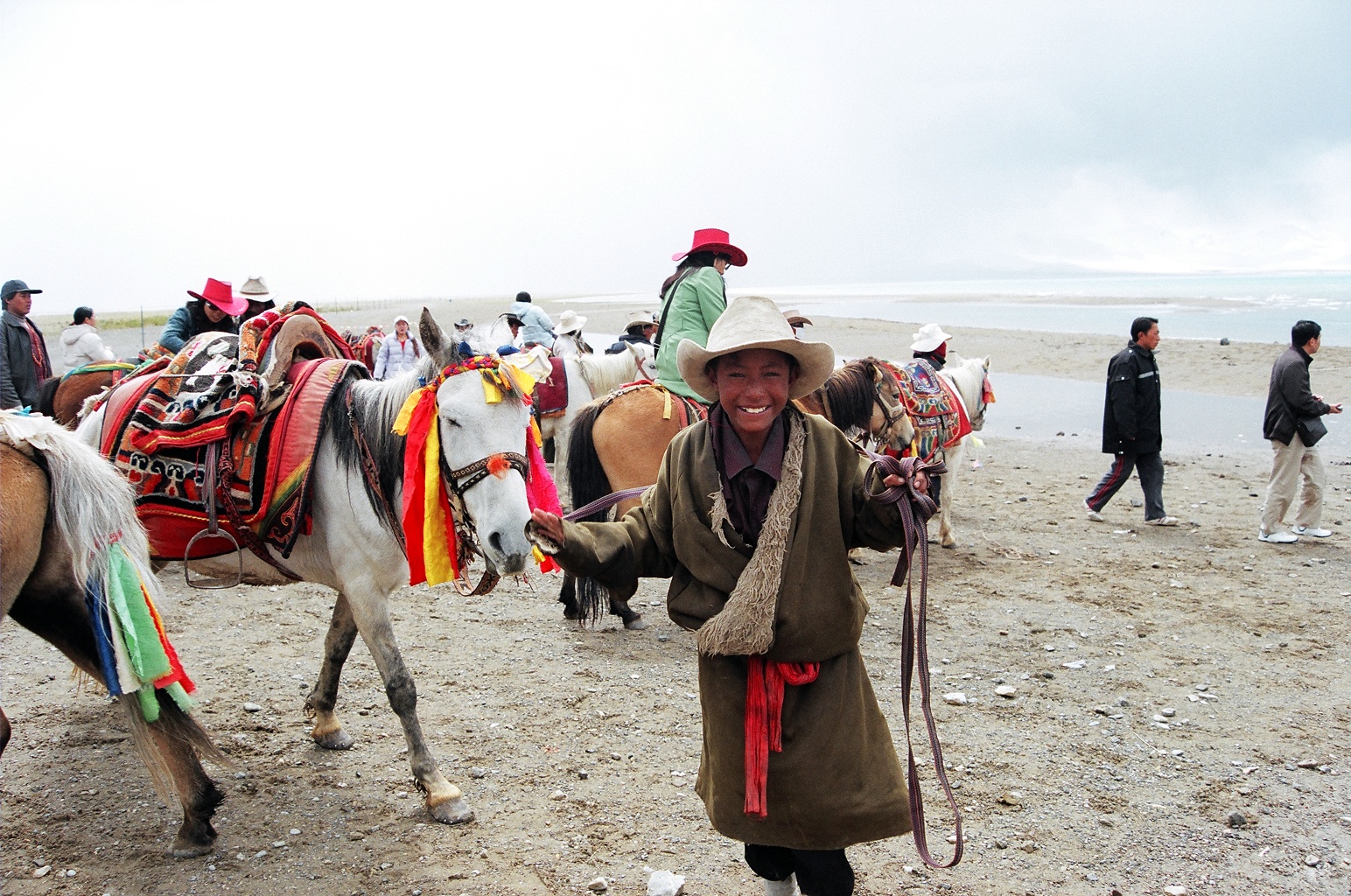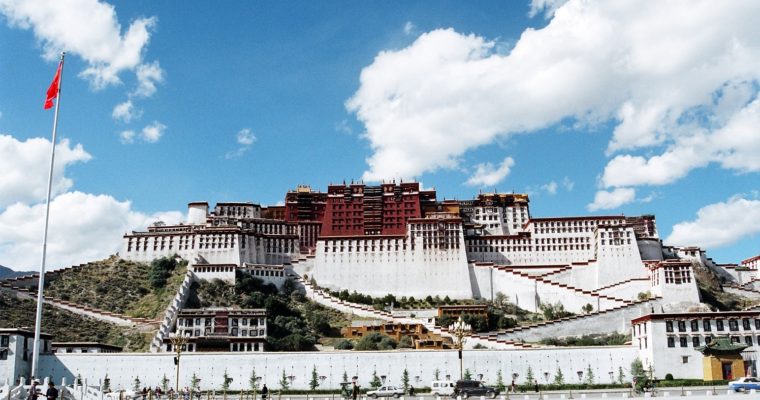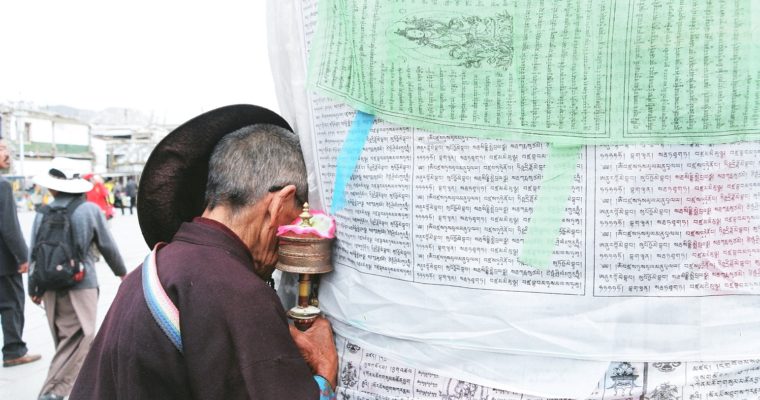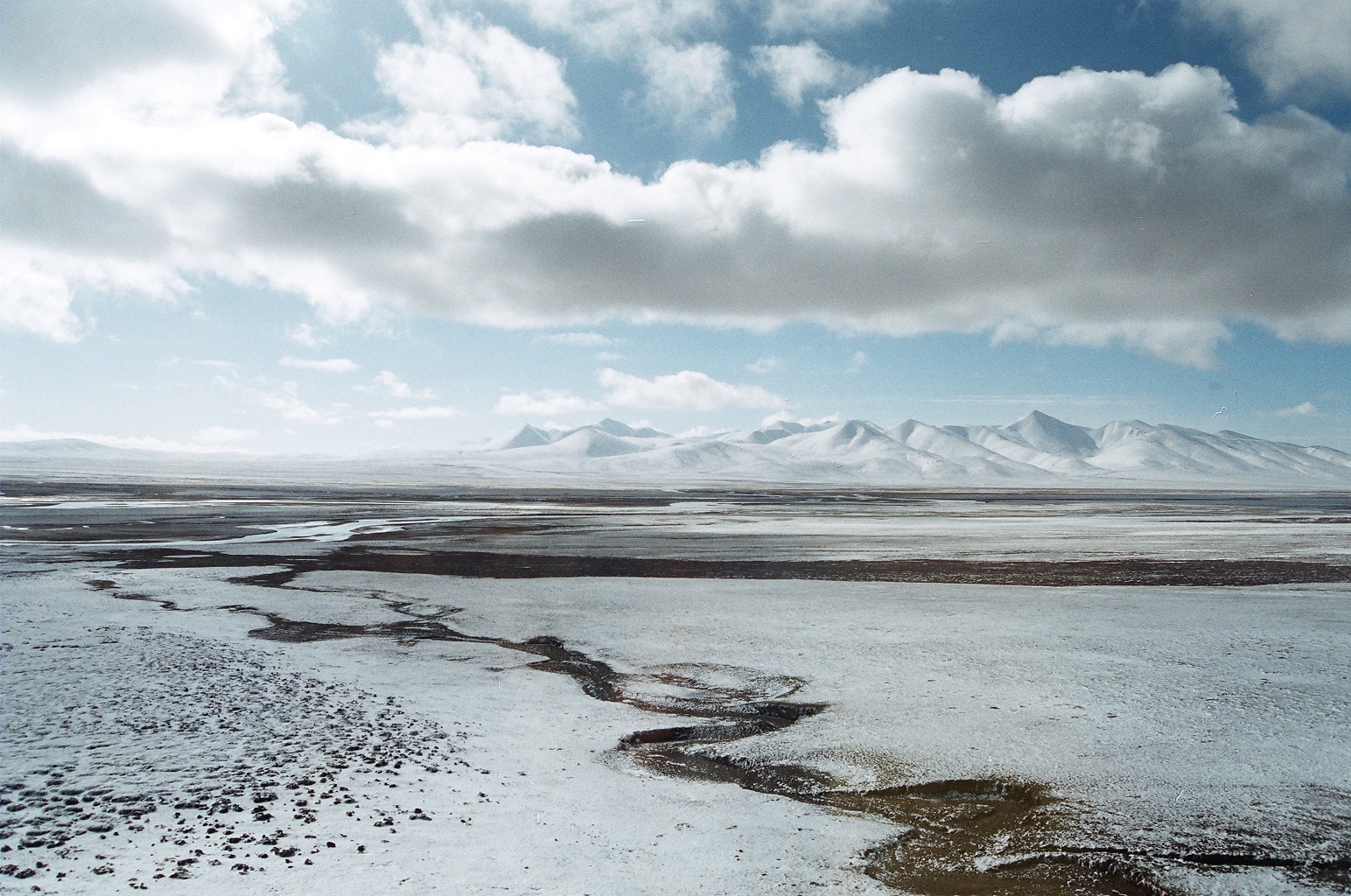Unlike Lhasa, Namtso is forever frozen in time.
If there is one piece of advice I have for travelers going to Tibet, it is that they must bring some warm clothing with them, at least a sturdy, layered windbreaker and a scarf.
It was frigid up at Namtso. At an altitude of 4,718 metres, the lake is in winter year-round. The area frequently turns stormy subject to the whims of nature. Yet many natives still live in this severe environment. Being a holy lake in Tibet, the Namtso attracts tourists throughout the year, and tourism has enabled a livelihood that the Tibetans have caught on in order to survive.
The scenery at Namtso amply compensated for the terrible cold. We arrived on a gloomy morning. The lake was enveloped by a range of snowy-topped mountains from afar. The vast body of water flowed peacefully, not unlike the tides of a calm ocean. Occasionally the sun shone, giving a false glimmer of hope that there might be warmth coming, but it would soon hide coyly behind the clouds again. In fact, it snowed for a little bit after. Many natives were leading horses and yaks for the tourists to ride on, and there were no lack of activities despite the bitter cold.
We walked around to explore the area. Even at this altitude and cold there was a monastery nearby. Although I did not visit the monastery, the signs of Tibet’s religious heritage were seen everywhere. Scripture thangkas were hung, fluttering by the wind. A man sat amidst a huge pile of stones, inscribing Tibetan Sanskrit onto the tablets with a small booklet of scripture as his reference.
There was a settlement area near the lake, and this would be the only opportunity I had in this trip to observe a Tibetan home. Some structures were built, and some others were canvas-covered makeshift tents similar to the Mongolian yurts. We went into a stall-like structure and found ourselves in a family-run setup serving food. Surely, it was too primitive to be called a restaurant, yet the hospitality was no less wanting.
We sat down and eagerly waited for hot bowls of noodles. There was a picture of the Panchen Lama in the home, taking the place of the Dalai Lama, who was in exile and thus whose picture could not be displayed. On the menu was the one and only offer – a lamb soup noodle. As much as I would like to enjoy local food, lamb was the one thing that I really could not stomach. I could take a minimal amount of mutton, but to have soup that was cooked with bones and intestines could make me barf. I thus opted for ramen instead.
We were free to look at the open kitchen as we waited. The Tibetans leading nomadic lives rely on dried yak dung as their fuel. I was told that, once dried, the cow dung was clean and they freely used their hands to handle it as fuel. The pot of mutton soup was simmering, but we were told that it was not ready yet. I also waited a long time for my ramen.
We slurped the noodles with great anticipation. Yet just after the first bite we looked at each other in disappointment: the noodles were not hot. It was very steamy but not hot. In Tibet, we came to experience our high school science lesson in real life: the air pressure was so low at high altitude that the boiling point of water was much lower than 100 degrees Celsius. That explained why so much time was needed to cook the noodles. The “boiling water” was at a lukewarm temperature. The mother looked at us eagerly to see if we liked our lunch, and that was instead what kept us warm.
The children of the family came around us, wearing heavy rags. We could not talk, because most of them spoke Tibetan only. Yet we did communicate, especially with a lovely little one who knew how to conduct herself in front of our cameras, posing for pictures with ease. They knew what kept the tourists’ hearts.
I have heard of people meeting the rich Tibetans who ran businesses and profited enormously from the development of Lhasa, especially by tourism. Yet I daresay that poverty was still the norm for the native Tibetans and a lot of the non-Han Chinese inhabitants in Tibet. Someone at Harvard Business School has come up with the idea of Yaksmere, the use of Yak fur to make cashmere. That would be one way that the developed world can bridge the gap between a primitive economy and the demands for pricey products by the consumers of the world. I surely hope that, one day, these kinds of ideas would blossom into viable businesses that lift the Tibetans’ standard of living, one yak at a time.
